In this assignment, we had an opportunity to produce a television advertisement for a client, in which we were able to express our own creative and technical techniques in accordance with a special client.
In discussion with our tutor David Jenkins, we were put into small teams consisting of three members. Our team members include Igor, Ali and me. We started to discuss a few ideas for our production which ended up with the conclusion that we needed to undertake further research for more inspiring ideas. The first and more appropriate client to get access to seemed to be one of Igor’s friends who’s got a tattoo parlor which we believed to be a good theme for our advertisement.
We discussed a couple of ideas such as producing an advert for a gym, for a company called Nextgenfutures or a tattoo salon. (Which I have scanned brainstorming below.) As for the gym which was my idea, we thought it would be quite difficult to do the shooting in the gym due to members doing exercise all the time. As for the Nextgenfutures which was Igor’s idea, although it could be a great subject to make an advert of as it would suggest good pieces of advice to the students for getting an opportunity to get to the apprenticeship, we ended up agreeing to the tattoo advert as it was easier to approach the client. Igor made a phone call to his friend and we had the acceptance and willingness of the client to proceed with the project.
Here is a brief overview of brainstorm came up with.
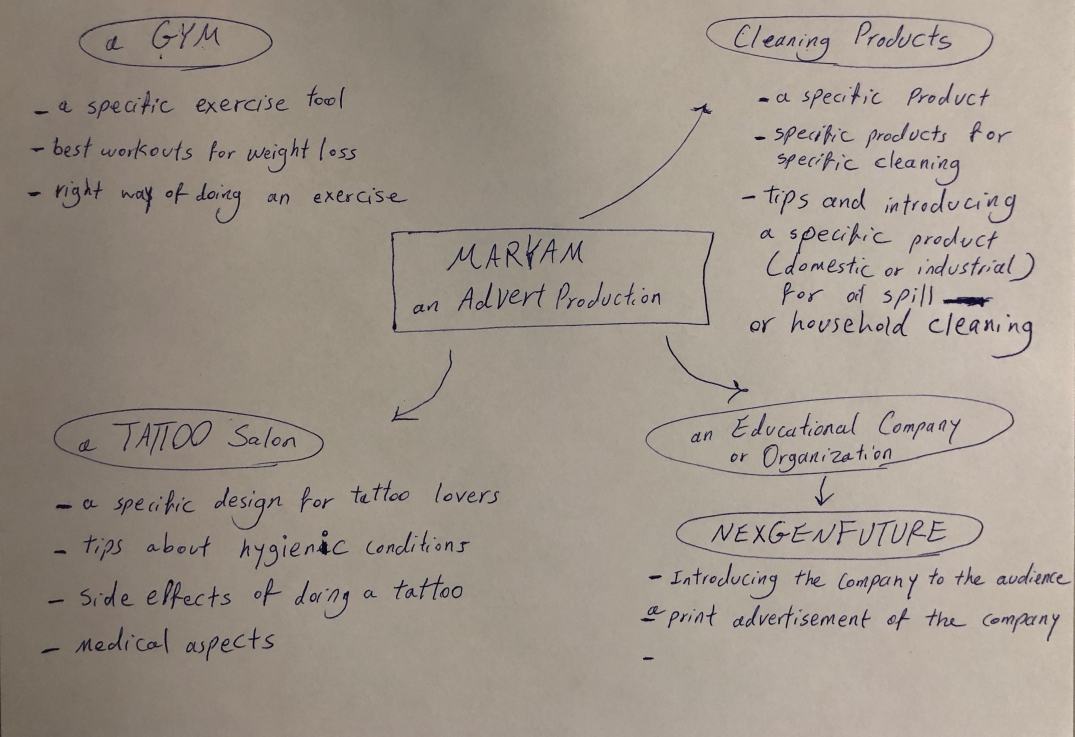
I started research first on the history of the tattoo. Here is a photograph was taken by Watts and Skeen showing a Burmese youth having his tattoo in the 1890s, Burma (Myanmar). This photograph is now in British Museum.
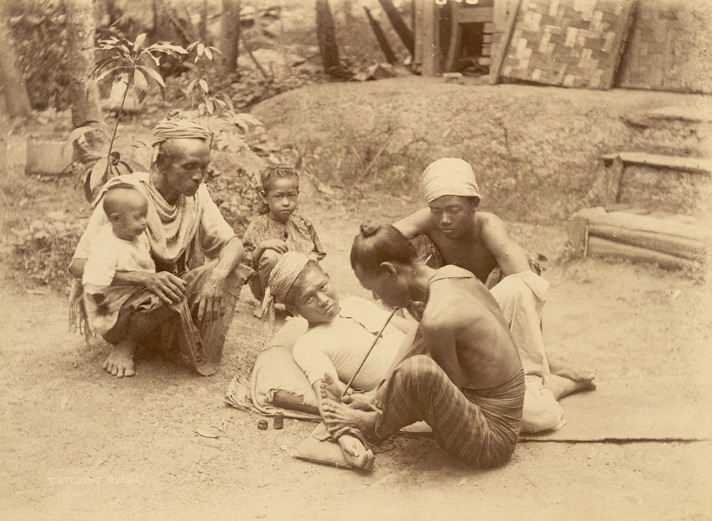
The history of tattooing goes back many centuries:
“It is also found amongst some of the ancient mummies found in China’s Taklamakan Desert c. 1200 B.C., although during the later Han Dynasty (202 B.C.-A.D. 220), it seems that only criminals were tattooed. Japanese men began adorning their bodies with elaborate tattoos in the late A.D.’
Here are two interesesting historical videos about the long history of the tattoo:
I had a look at a few tattoo websites to see the forms and styles of advertisements they have already had in social media, as well as information on tattoo enthusiasts and the variety of tattoo designs they are interested in, and the range of services that tattoo studios usually deliver to the customers. Then I checked the tattoo parlour’s website and the client’s pages on Instagram to have a look at the previous advertisements and her customers’ reviews and comments on the tattoo designs to get to a comparative point of view about our client’s website and its services. I reckoned that it would be beneficial for getting to some more inspired storylines and styles.
Below are some good examples of tattoos commercials that we found on Youtube.
Regarding the plot and storyline of the advert, we had a conversation with our teacher Katy about the plot and the storyline of the advert and how we were going to improve upon it. We discussed the pros and cons of making the advert in both drama and documentary style and ended up with producing our advert in the style of an animated and documentary to give the audience greater entertainment. For that purpose, we discussed how it should be devised, formed and shot. Igor had the idea of opening the first shot with an animated snake opening his mouth to present the tattoo production, which it changed after as the first plot changed to the second one.
Storyboard
The first idea: the character of the advert will have a trip to the galley and British Museum to have a look at the pictures and artworks to get inspired for finding his favorite design which will end up with getting obsessed by a snake design. He will share his idea with the tattoo artist. She is going to sketch the design, and then he is going to have the tattoo which he’s happy with.
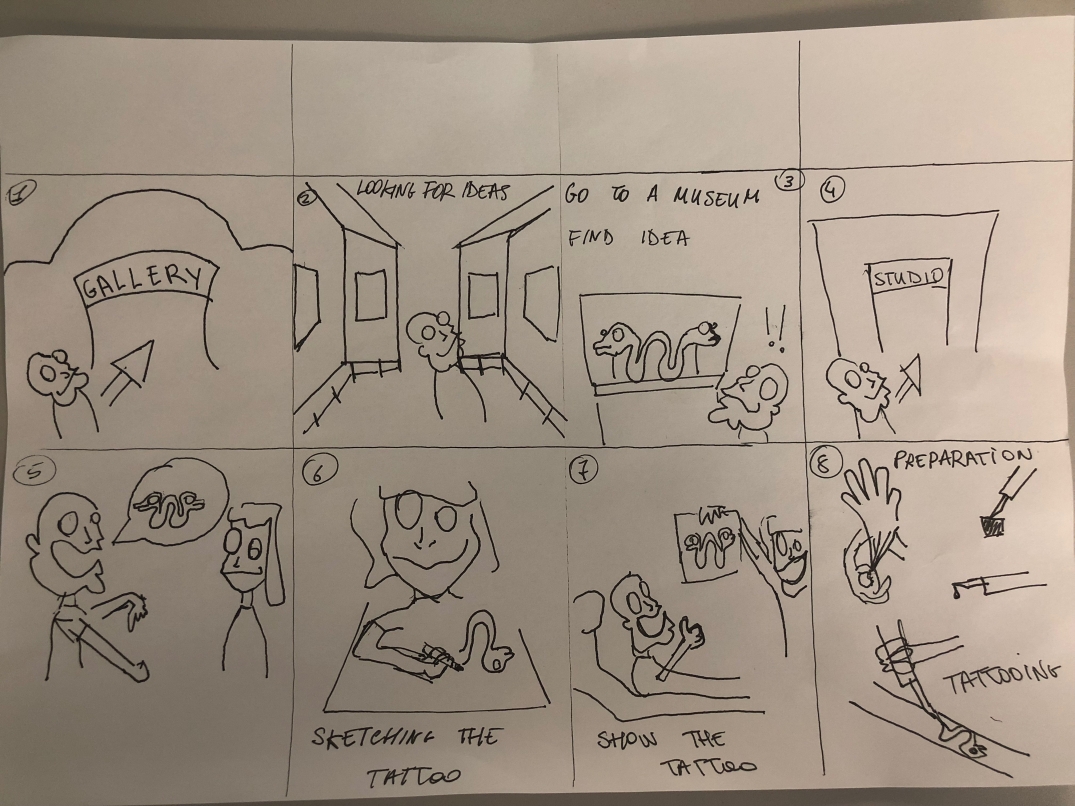
Second draft:
As we came across with some changes regarding our client, we changed the plot in this way: the actor of the advert will be having a tattoo. It begins with the animated Logo of the tattoo parlor. There will be a voice-over talking about the inspiration of the idea. Then the tattoo artist is going to sketch the design, and finally, the actor is going to have the tattoo which She’s happy with.
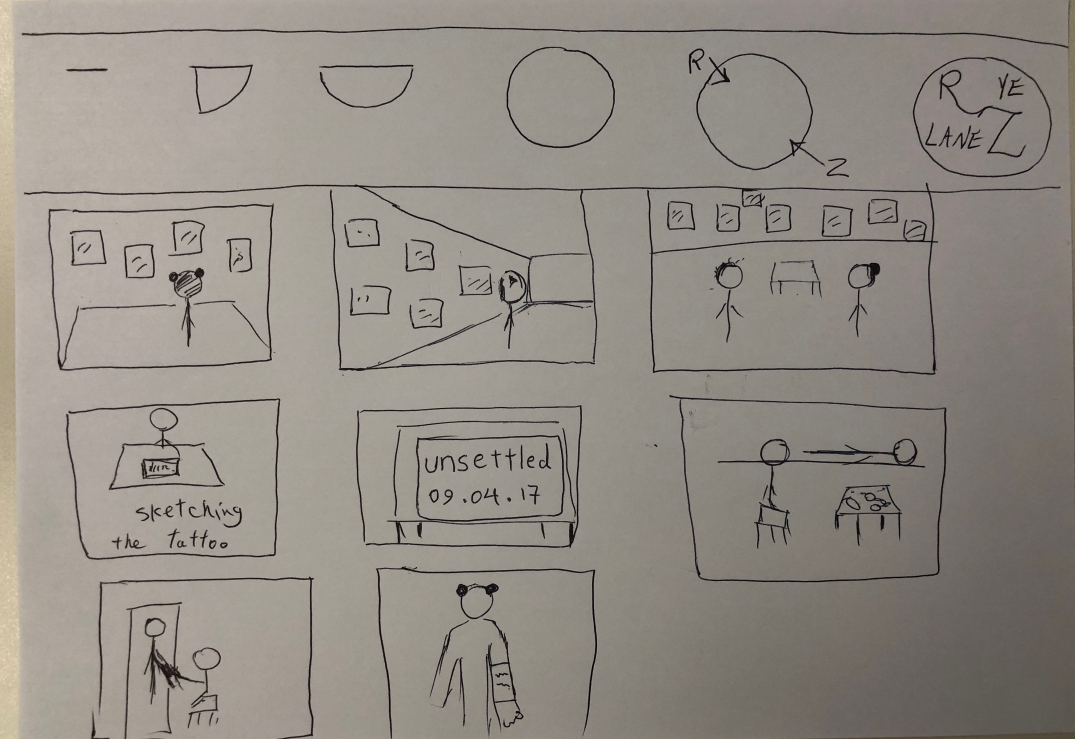
Here is production table of the scenes and shots of the first idea we were going to produce.
| Scene | Shot | Action |
| 1 | 1 | WS Igor walks to the British Museum |
| 1 | 2 | WS Igor enters to the British Museum |
| 2 | 1 | WS Igor looking at a picture
(Rack focus to Igor) |
| 2 | 2 | CU of the picture |
| 2 | 3 | Igor sees the picture and gets the Idea |
| 3 | 1 | CU of some designs in the tattoo parlour |
| 3 | 2 | MS Igor shows the design to the tattoo lady |
| 3 | 3 | CU Igor’s face |
| 3 | 4 | CU tattoo lady’s face |
| 4 | 1 | Tattoo lady drawing |
| 4 | 2 | CU of the drawing design |
| 5 | 1 | WS Igor on the couch
Tattoo lady shows the design |
| 5 | 2 | CU the design |
| 5 | 3 | CU Igor agrees/ is happy |
| 5 | 4 | CU tattoo lady putting up the gloves |
| 5 | 5 | CU ink |
| 5 | 6 | CU tattoo lady begins on Igor’s hand |
| 6 | 1 | CU Igor’s face |
| 6 | 2 | WS Igor and tattoo lady |
| 6 | 3 | |
In our meeting with our first client Eliah, we interviewed her in the 01Studio about her occupation, inspiration, styles, methods and the equipment she used as well as her background in tattooing, target audience and her future plans for expanding her business.
Pitching the Idea to the client
As our client changed, we suggested our idea to him, explained how it’s going to be produced, and also we interviewed him about his background in tattooing.
Here are the interview and the pitching we recorded.
Location & scheduleEquipment
We arranged a time with the tattoo artist to head to the Rye LaneZ tattoo parlor located at Shop 32, 48 Rye Ln, Peckham, London for shooting. We did the shooting in three days. We used a tripod and two cameras for close-up and wide shots, also we took a few pictures of the parlor with either the camera or iPhone.
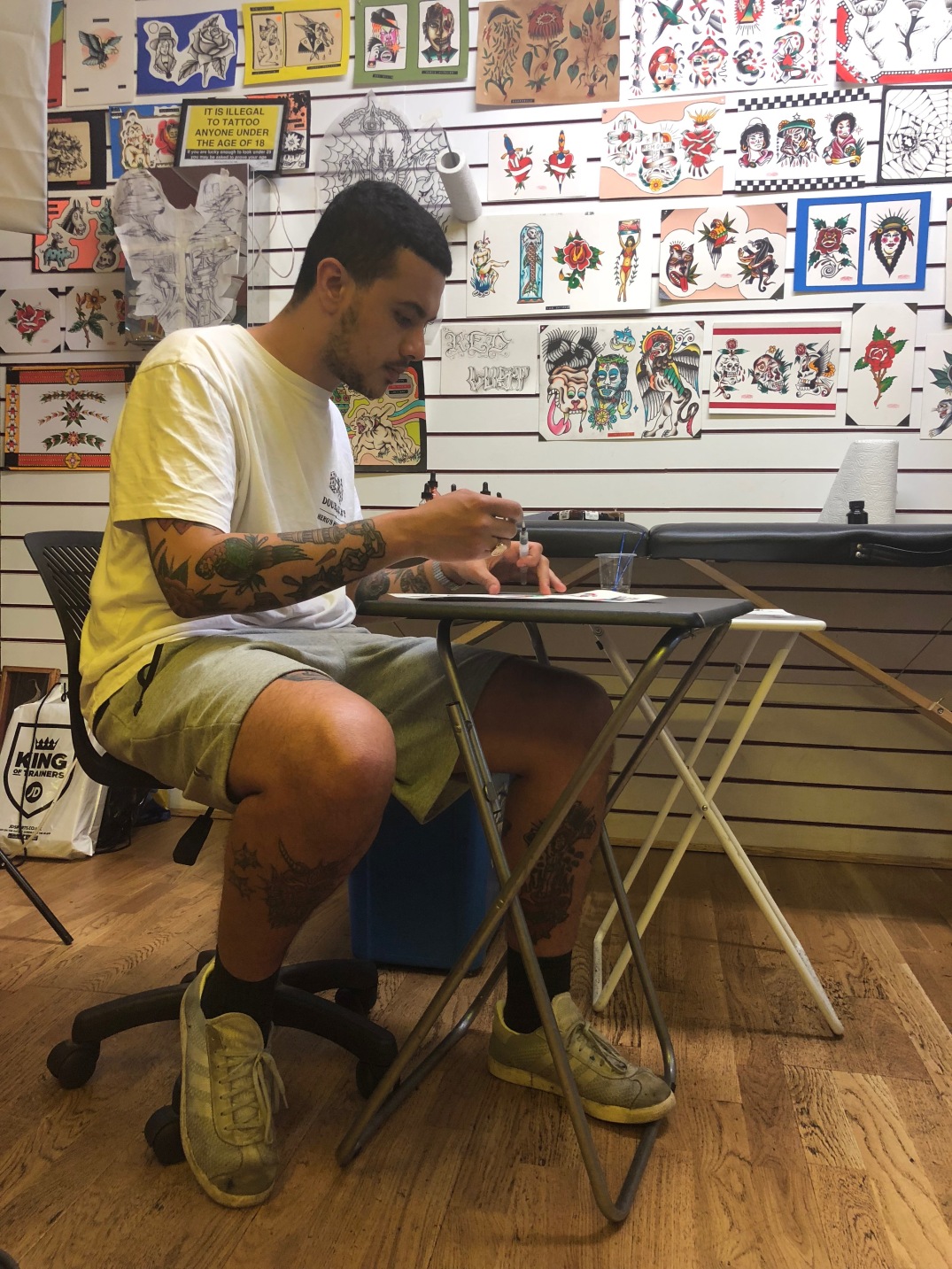
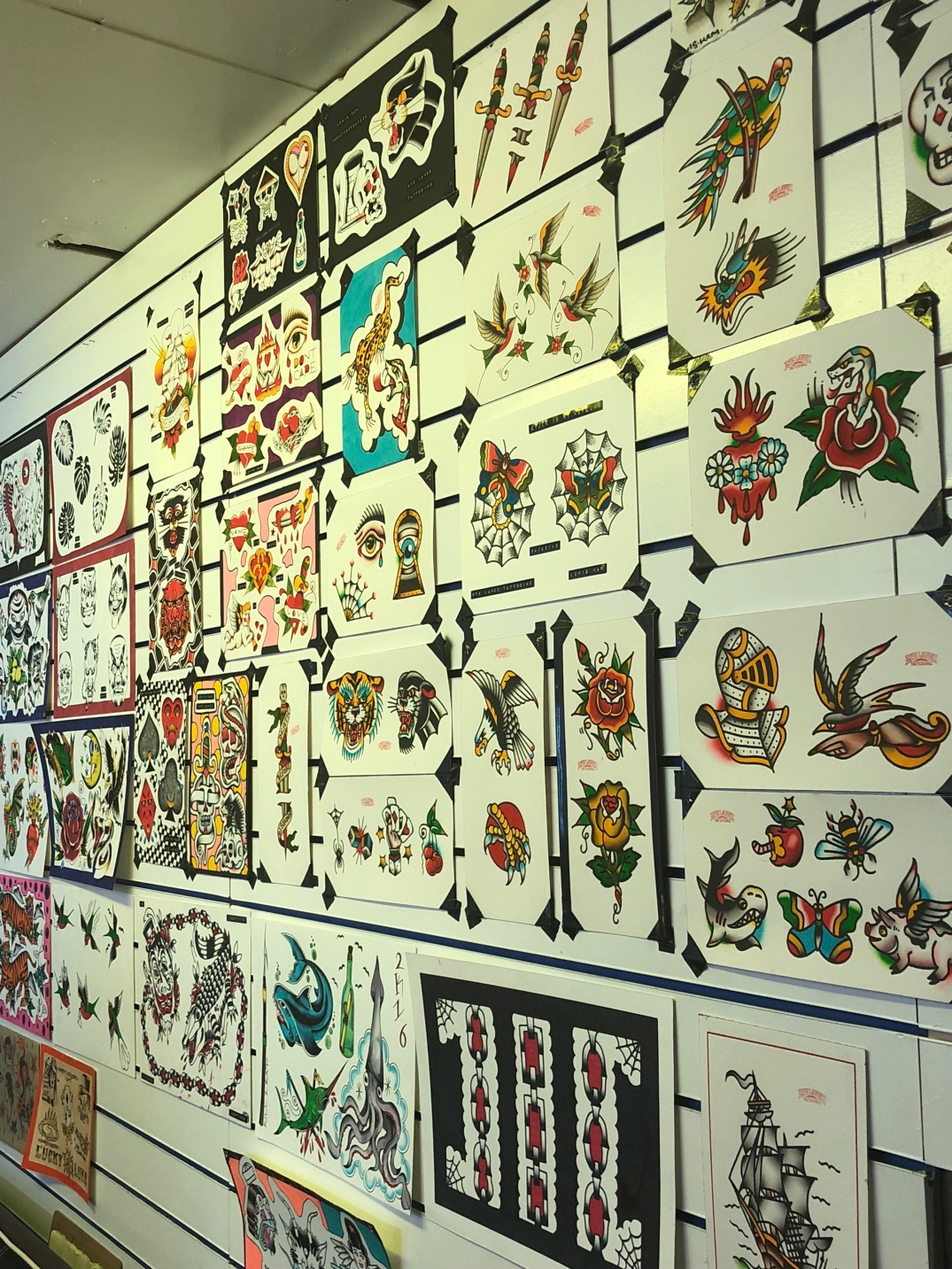
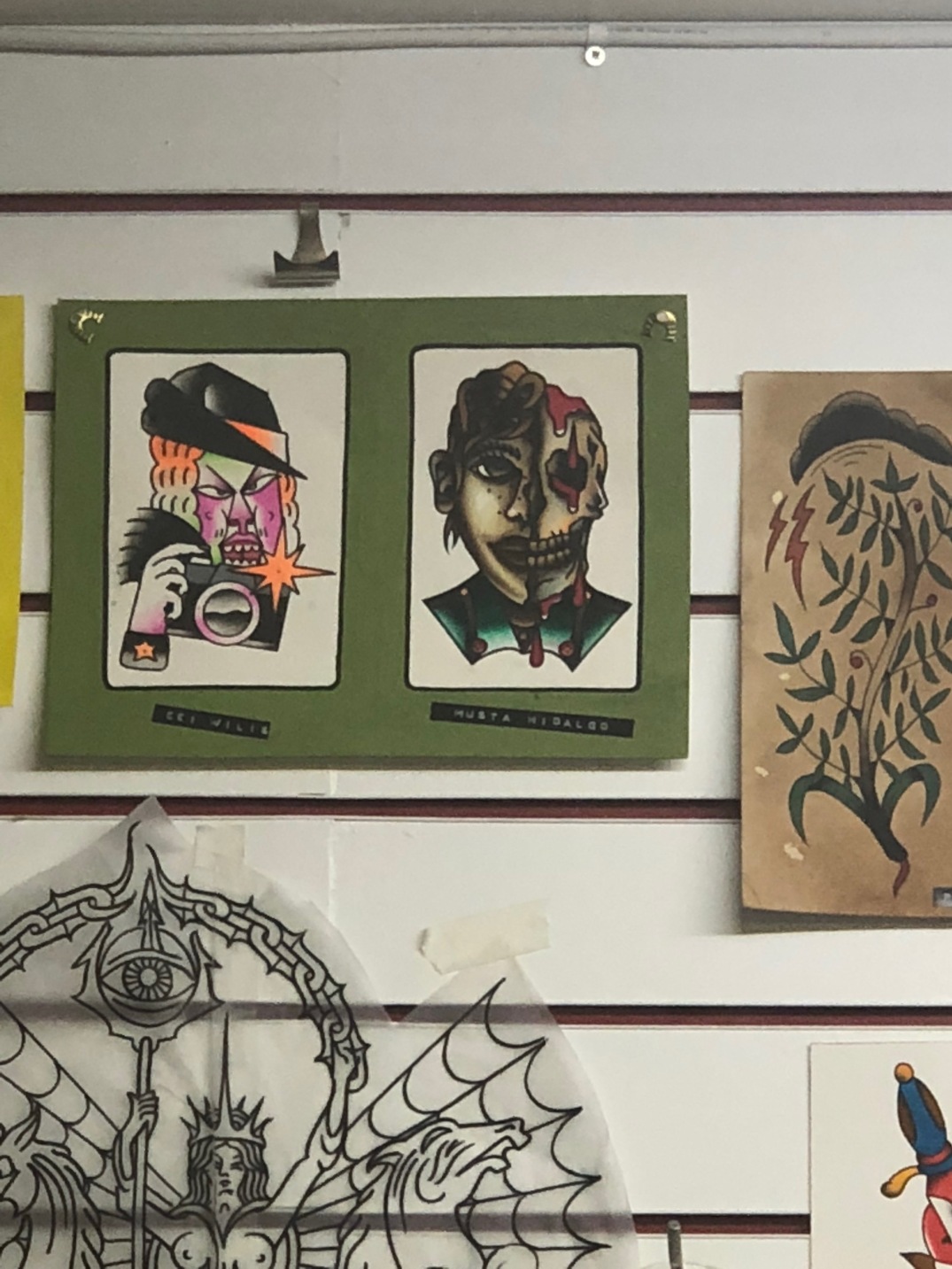
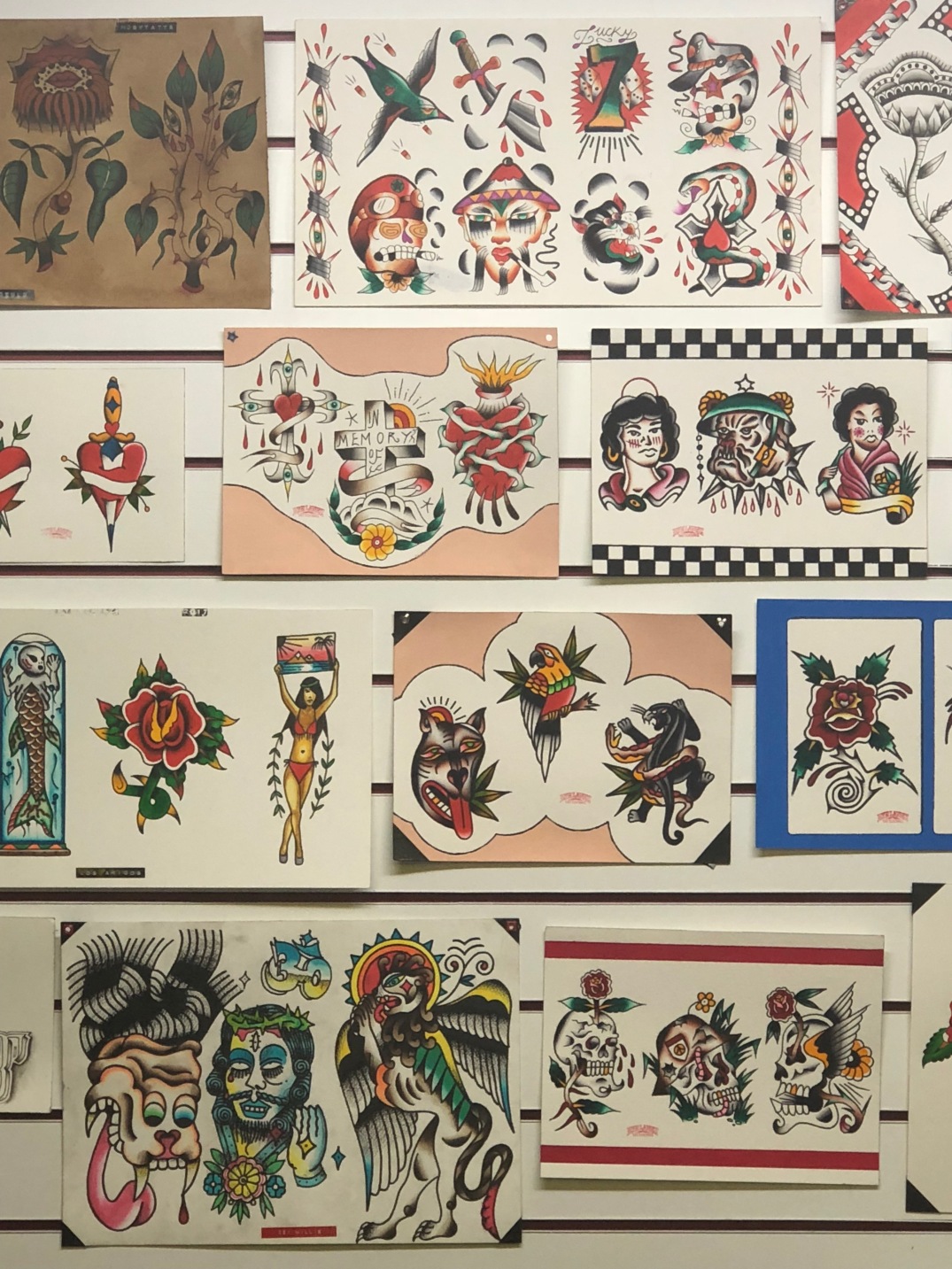
Planning the time for production and post-production process
It will require 1 day for interviewing the client in his workplace. We will film for another 2 days for pitching the idea and for shooting the production. Also, I will take three weeks for searching and the editing process.
Location & Equipment
We arranged a time with the tattoo artist to head to the Rye LaneZ tattoo parlor located at Shop 32, 48 Rye Ln, Peckham, London for shooting. We did the shooting in three days. We used a tripod and two cameras for close-up and wide shots, also we took a few pictures of the parlor with either the Canon Camera or iPhone.
Setting Up/ Set Construction
We visited the interior and exterior area of the tattoo parlor to manage the setting we needed for the shooting day. We decided that we needed one tripod, two or three cameras.
Costs
I estimated the cost for the production process which would be £30 for travel tickets for three or four days.
Regarding marketing the advert I did research on a couple of data provider’s websites to see how much does it cost for an advert to be released on TV network.
According to THEDRUM.COM website research, “while TV remains a central part of the mix, there’s no denying that digital ad spend is overtaking it at a great pace”, and eMarketer predicts that “by 2020 online ads will account for 60% of marketing budgets while TV will represent just 21.5% – a decline from the projected 25% slice anticipated. Although it’s clear digital will continue on its path to domination, the effectiveness of TV is still likely to be a hot topic.”
The figures below provide a guide to the average cost of a 30-second slot on each network.
| ‘Average cost Table’ | daytime slot | peak rate |
| ITV | £3,500 to £4,500 | £10,000 £30,000 |
| Channel 4 | £1,000 to £2,00 | £10,000 to £20,000 |
| Channel 5 | £800 to £1,600 | £2,500 to £4,500 |
| Sky 1 | £150 to £250 | £650 to £1,150 |
| a Sports Channel | £10 to £50 | £60 to £750 |
| a Horror Channel | £50 to £150 | £150 to £300 |
Legal and Regulatory Requirements
ASA
The Advertising Standards Authority (ASA) is the UK’s independent advertising regulator. The ASA makes sure ads across UK media stick to the advertising rules (the Advertising Codes).
Below are a couple of rules:
- Advertisements must not be harmful or offensive. Advertisements must take account of generally accepted standards to minimise the risk of causing harm or serious or widespread offence. The context in which an advertisement is likely to be broadcast must be taken into account to avoid unsuitable scheduling.
- Advertisements must contain nothing that could cause physical, mental, moral or social harm to persons under the age of 18.
- Children must be protected from advertisements that could cause physical, mental or moral harm.
- Television only – With limited exceptions, living persons must not be featured, caricatured or referred to in advertisements without their permission.
- Advertising that contravenes the prohibition on political advertising set out below must not be included in television or radio services:
Ofcom
Ofcom is the communications regulator in the UK. It regulate the TV, radio and video-on-demand sectors, fixed-line telecoms (phones), mobiles and postal services, plus the airwaves over which wireless devices operate. It operate under a number of Acts of Parliament, including in particular the Communications Act. “It shall be the principal duty of Ofcom, in carrying out their functions; (a) to further the interests of citizens in relation to communications matters; and(b) to further the interests of consumers in relevant markets, where appropriate by promoting competition”
- the UK has a wide range of electronic communications services, including high-speed services such as broadband
- people who watch television and listen to the radio are protected from harmful or offensive material
References:
- Bryant A & Mawer Ch, (2016). ‘The TV Brand Builders’. Koganpage.
- Abercrombie N. & Longhurts B. (1998). ‘audiences’ SAGE Publications Ltd.
- Weerakkody N. (2009). ‘Research Methods for Media and Communication’, Oxford.
- Barry P, (2016). ‘The Advertising Concept Book’, Thames & Hudson.
- History of Tattooing, Available at: https://en.wikipedia.org/wiki/History_of_tattooing
- Tattoos, Available at: https://www.smithsonianmag.com/history/tattoos-144038580/
- The Drums, ‘How much does it cost to advertise on UK TV?...’. Available at: http://www.thedrum.com/news/2017/02/22/how-much-does-it-cost-advertise-uk-tv-heres-what-channel-4-itv-and-more-charge-slots
- BARB, Available at: http://www.barb.co.uk/
- Thinkbox.tv, Available at: https://www.thinkbox.tv/
- Gayomali Ch, ‘Meet Roxx, the Woman at the Forefront of the Ink World’s Coolest Artistic Movement’. Available at: https://www.gq.com/story/roxx-tattoo-artist-interview
- ‘Elements of Cinema | A Student’s Guide to the Fundamentals of Filmmaking’. Available at: http://www.elementsofcinema.com/index.html
- ASA, Available at: https://www.asa.org.uk/type/broadcast/code_folder/introduction.html
- Ofcom, ‘What is Ofcom?’. Available at: https://www.ofcom.org.uk/tv-radio-and-on-demand/advice-for-consumers/television/what-is-the-watershed